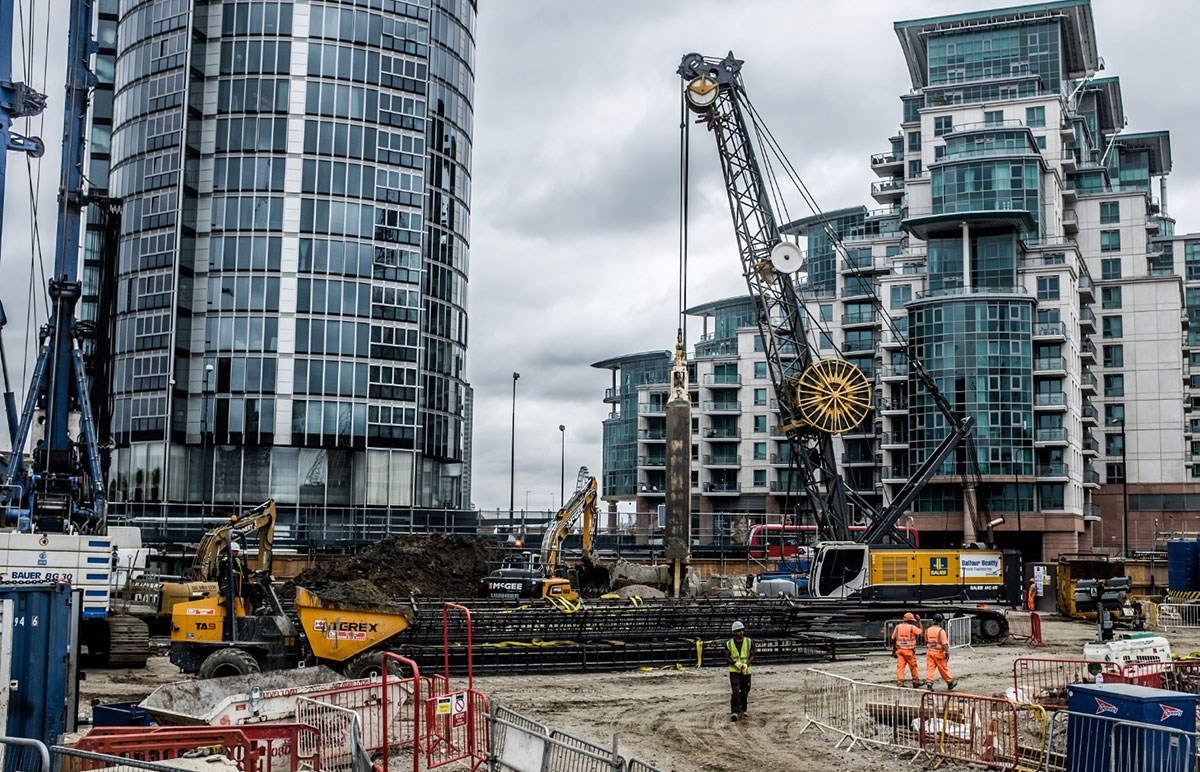The Only Guide to Geotheta
The Only Guide to Geotheta
Blog Article
Unknown Facts About Geotheta
Table of ContentsNot known Facts About GeothetaGeotheta for DummiesGeotheta for DummiesGeotheta Can Be Fun For AnyoneThe smart Trick of Geotheta That Nobody is Discussing

They conduct site examinations, collect examples, execute laboratory tests, and assess data to assess the suitability of the ground for building and construction tasks - Geo Tech Engineer. Based upon their searchings for, geotechnical designers provide recommendations for structure style, incline security, keeping structures, and mitigation of geotechnical threats. They work together with various other professionals, such as engineers, architectural engineers, and construction teams, to guarantee that geotechnical factors to consider are incorporated right into the total task design and execution
By assessing the actions and buildings of dirt and rock, they can recognize possible geotechnical threats such as landslides, dirt negotiation, or slope instability. Their experience aids stop failings or mishaps that could endanger lives and property. Below are some thorough obligations and duties of a geotechnical designer: Site Investigation: Geotechnical designers conduct site examinations to gather information on subsurface problems.
They translate the information to recognize the residential or commercial properties and habits of the soil and rock, including their strength, permeability, compaction qualities, and groundwater problems. Geotechnical Evaluation and Design: Geotechnical engineers evaluate the data gathered during site investigations to evaluate the stability and viability of the website for building and construction jobs. They do geotechnical computations and modeling to review variables such as birthing ability, negotiation, slope security, side earth pressures, and groundwater flow.
Some Known Incorrect Statements About Geotheta
Structure Style: Geotechnical engineers play an important role in developing structures that can safely sustain the designated framework. They analyze the dirt conditions and load needs to identify the suitable structure type, such as superficial foundations (e.g., grounds), deep structures (e.g (https://medium.com/@ianhammond2191/about)., piles), or specialized techniques like dirt enhancement. They think about variables such as negotiation limits, bearing capacity, and soil-structure interaction to develop optimal structure layouts
They assess building and construction strategies, monitor website activities, and conduct area assessments to confirm that the design recommendations are followed. If unforeseen geotechnical concerns occur, they analyze the circumstance and offer referrals for remediation or adjustments to the style. Threat Evaluation and Mitigation: Geotechnical engineers examine geotechnical threats and risks associated with the task website, such as landslides, liquefaction, or soil erosion.

Collaboration and Interaction: Geotechnical designers function carefully with other professionals associated with a job, such as designers, architectural engineers, and construction teams. Effective interaction and partnership are vital to integrate geotechnical factors to consider into the total project style and building procedure. Geotechnical designers supply technological experience, response questions, and guarantee that geotechnical needs are satisfied.
Geotheta Fundamentals Explained
Below are some kinds of geotechnical engineers: Foundation Engineer: Foundation designers concentrate on creating and analyzing foundations for structures. They analyze the dirt conditions, tons demands, and website features to identify the most suitable foundation type and layout, such as superficial structures, deep structures, or specialized methods like stack foundations.
They examine the aspects affecting incline security, such as dirt buildings, groundwater problems, and incline geometry, and establish strategies to prevent slope failures and mitigate risks. Quake Engineer: Earthquake engineers specialize in Discover More Here examining and designing structures to endure seismic forces. They examine the seismic danger of a site, review soil liquefaction capacity, and establish seismic design criteria to guarantee the safety and resilience of frameworks during earthquakes.
They carry out field testing, accumulate samples, and analyze the accumulated data to define the soil residential or commercial properties, geologic developments, and groundwater problems at a site. Geotechnical Instrumentation Engineer: Geotechnical instrumentation designers concentrate on tracking and measuring the actions of dirt, rock, and frameworks. They mount and keep instrumentation systems that check aspects such as soil settlement, groundwater levels, incline activities, and architectural displacements to assess efficiency and offer very early warnings of possible issues.
The Main Principles Of Geotheta
They perform tests such as triaxial examinations, combination examinations, straight shear examinations, and leaks in the structure tests to gather information for geotechnical analysis and layout. Geosynthetics Designer: Geosynthetics designers specialize in the layout and application of geosynthetic materials, such as geotextiles, geogrids, and geomembranes. They make use of these materials to improve soil security, enhance slopes, give drain remedies, and control erosion.
They have a tendency to be investigatory people, which indicates they're intellectual, reflective, and inquisitive. They are curious, systematic, rational, logical, and rational. Some of them are additionally social, suggesting they're kind, charitable, participating, individual, caring, practical, understanding, skillful, and friendly - Geo Tech Engineer.
In the workplace atmosphere, geotechnical engineers make use of specialized software program devices to do computations, create layouts, and assess information. They prepare records, review project requirements, connect with customers and team members, and coordinate task activities. The office setup supplies a conducive environment for study, evaluation, and partnership with other professionals entailed in the job.
Some Known Details About Geotheta
They regularly go to task sites to perform site examinations, evaluate geotechnical problems, and gather information for analysis. These visits include traveling to different places, in some cases in remote or challenging terrains. Geotechnical designers may execute dirt sampling, conduct tests, and display construction tasks to guarantee that the geotechnical facets of the project are being implemented correctly.
Geotechnical designers also work in specialized geotechnical research laboratories. In these centers, they conduct experiments, do examinations on dirt and rock samples, and evaluate the engineering residential properties of the products. Geotechnical laboratory engineers function thoroughly in these atmospheres, handling testing tools, operating instruments, and tape-recording information. They collaborate with other laboratory staff to guarantee exact and dependable testing results.
Report this page